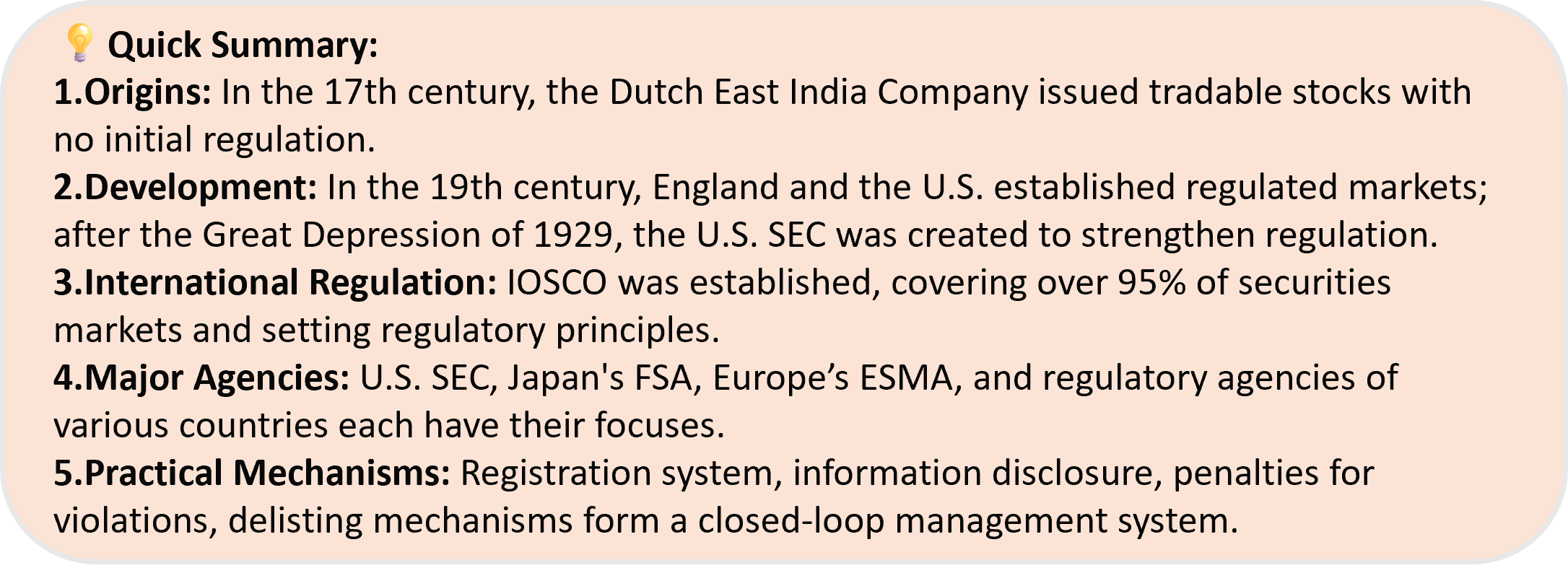TradingKey – Under the tide of global financial integration, stock market regulation is facing unprecedented challenges and transformations.
Markets are no longer confined within national borders, with capital flowing freely across the globe. Regulatory authorities must also keep pace, reaching beyond their borders to investigate issues and even adapt to the new rules of the digital age.
For example, South Korea’s Financial Supervisory Service once pursued cross-border accountability for illegal short-selling activities by international investment banks, breaking away from the traditional regulatory logic of “each country takes care of its own.” Meanwhile, China’s China Securities Regulatory Commission (CSRC) has been strengthening oversight on algorithmic trading involving northbound funds through the Hong Kong Stock Connect, emphasizing equal treatment for both foreign and domestic capital.
These actions indicate one fact: global stock market regulation has entered a new phase of interconnectivity and shared governance.
Looking at Europe and the United States, the U.S. Department of Justice has become increasingly stringent in its antitrust review of financial institution mergers, while the European Union is pushing forward with the digital upgrade of the Market Abuse Regulation (MAR). All these moves together form a multidimensional picture of contemporary stock market regulation.
When we look back, the history of stock markets is much older than we might imagine.

How Has Stock Market Regulation Evolved?
Its history can be traced back to 17th-century Europe, with the Dutch East India Company being the most famous example. This company issued the first batch of stocks that could be publicly traded in the market. At that time, the market was still small, trading was not standardized, and there was practically no regulation at all.
By the mid-19th century, as the market expanded, chaos followed. Countries began to realize that they could not simply let things run their course. The UK enacted the Joint Stock Companies Act in 1844, requiring companies to disclose prospectuses so investors could see more clearly what they were investing in. Meanwhile, in the United States, the New York Stock Exchange established rules governing member conduct in 1864, marking the first step toward self-regulation.
Regulation became truly serious in the early 20th century during a major crisis. In 1929, the U.S. stock market crashed, triggering the global Great Depression. This disaster prompted countries to take stock market regulation seriously. In 1933 and 1934, the United States enacted the Securities Act and the Securities Exchange Act, respectively, and created the Securities and Exchange Commission (SEC), which greatly enhanced the disclosure framework and took a strong stance against violations and illegal activities.
In the following decades, as markets continued to develop, regulation also evolved continuously. From the Black Monday crash of 1987 to the bursting of the dot-com bubble around 2000, each crisis led to new regulatory measures.
Starting in the 1970s, globalization accelerated, and stock markets gradually became more international. Cross-border transactions increased, and capital flows became more frequent. This also made regulatory cooperation increasingly important. In 1988, the Basel Accord was introduced, though primarily aimed at the banking system, it profoundly affected capital flows and risk management across financial markets.

(Source: Freepik)
What Are the Major Global Regulatory Authorities?
International Organization of Securities Commissions (IOSCO)
The most influential regulatory body internationally is the International Organization of Securities Commissions (IOSCO).
It covers almost all major financial markets worldwide, with members including securities regulators from more than 130 countries and regions, representing over 95% of the global securities market.
Its objectives are well-defined: to safeguard investors, maintain fair market operations, and diminish systemic risks.
To achieve these objectives, IOSCO has formulated a set of core regulatory principles, which have become an important reference standard for regulators around the world and laid the foundation for cross-border regulatory cooperation.
United States
In the United States, the Securities and Exchange Commission (SEC) is the central authority for stock market regulation. It holds broad powers covering everything from corporate disclosures to the regulation of trading behavior.
The SEC places great emphasis on information transparency, requiring listed companies to regularly disclose their financial conditions and business operations so investors can assess whether a company is worth investing in.
At the same time, it takes a tough stance against illegal activities such as insider trading and market manipulation, imposing severe penalties once violations are confirmed.
Backed by the Securities Act of 1933 and the Securities Exchange Act of 1934, the SEC enjoys strong legal support, ensuring the stable operation of the market. It can be said that the SEC is not only the guardian of the U.S. capital market but also plays a pivotal role in the global regulatory system.
Japan
The Financial Services Agency (FSA) is responsible for financial regulation nationwide, including the stock market.
It not only formulates and enforces financial laws and regulations but also oversees financial institutions, maintains market stability, and protects investor rights.
Europe
The European Securities and Markets Authority (ESMA) is dedicated to promoting regulatory harmonization within the EU and advancing the integration of capital markets. It plays an important role in coordinating national regulatory policies and improving market transparency.
However, apart from this regional institution, individual countries also maintain their regulatory bodies.
For example, the UK’s Financial Conduct Authority (FCA) is known for its rigorous and detailed approach, especially focusing on the conduct of financial institutions and investor protection, with strict scrutiny over various business activities.
Germany’s Federal Financial Supervisory Authority (BaFin) emphasizes risk prevention and financial system stability, maintaining a comprehensive risk monitoring mechanism.
France's Autorité des Marchés Financiers (AMF) prioritizes transparency and fairness in the market while actively combating manipulation and fraud to create a just and competitive trading environment.

(Source: Freepik)
How Do the Practical Mechanisms Work?
1. Registration System and Tiered Review
Nowadays, more and more markets are adopting the registration system, with its core focus on information disclosure.
As long as enterprises meet basic formal requirements, they can apply for listing, no longer needing to go through multiple layers of approval as in the past.
Under this system, stock exchanges are responsible for initial review, while the securities regulatory authority retains the final right to reject applications, and also strengthens supervision during and after the event.
2. Strict Information Disclosure Requirements
Once listed, companies are not free from obligations. They must continue to disclose their financial conditions and major events to the public.
This information must not only exist, but also be true, accurate, and complete; otherwise, legal liability will follow.
In the United States, the SEC requires financial reports to be submitted in XBRL format—a structured data format that is machine-readable and improves regulatory efficiency.
In China, emphasis is placed on making disclosures "concise, clear, and easy to understand." For example, in annual reports, descriptions of "material events" must not only explain what happened, but also clarify how the event might affect investors' decision-making.
3. Penalties for Violations
Insider trading and market manipulation are red lines that regulators around the world do not tolerate.
Notably, cross-border regulatory cooperation has also been continuously strengthened.
The Sino-U.S. audit oversight cooperation serves as a typical case. In 2022, the U.S. Public Company Accounting Oversight Board (PCAOB) conducted its first comprehensive inspection of Chinese accounting firms, meaning that the delisting risks faced by Chinese companies listed in the U.S. have been significantly reduced.
4. Delisting Mechanism
Delisting is nothing new—it is an important mechanism for market self-renewal. Just as living organisms need metabolism to maintain vitality, stock markets also rely on removing unqualified companies to keep the overall ecosystem healthy.
The U.S. adopts a “market-based delisting” approach. In 2023, about 70% of companies delisted from the New York Stock Exchange were removed because their stock prices had remained below $1 for a prolonged period.
China implements a dual-track system combining “mandatory delisting” and “voluntary delisting.”
In summary, from market entry to exit, regulation has formed a closed-loop management system covering the entire process.
This mechanism not only protects investor interests but also enhances the vitality of the market itself, truly achieving survival of the fittest.


